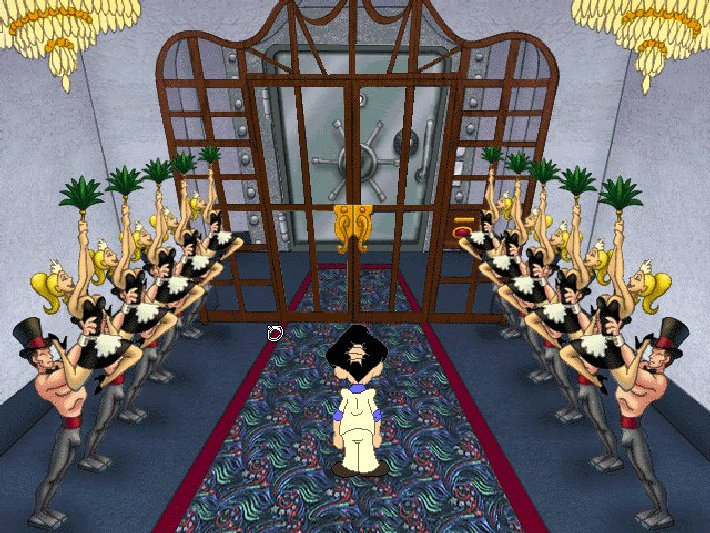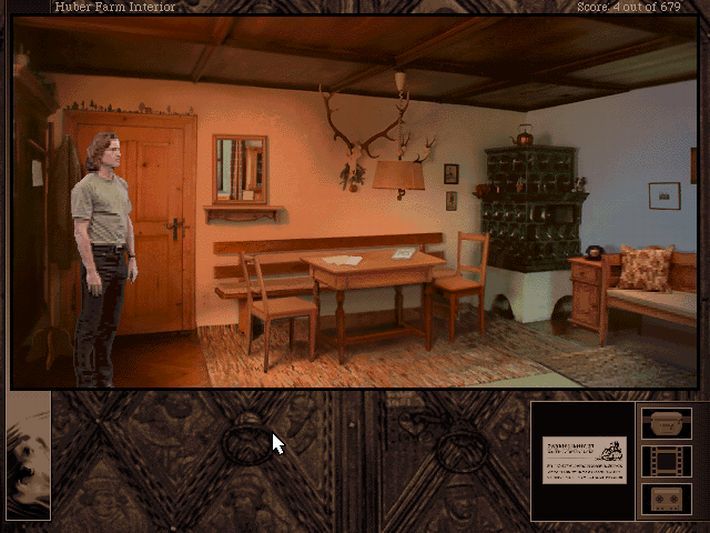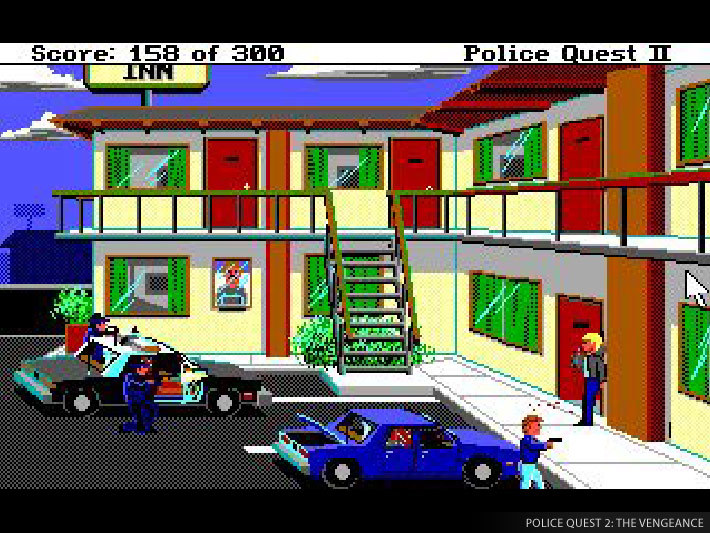- Joined
- Dec 12, 2018
- Messages
- 1,169
- Trophies
- 0
Want to be a king, detective, or maybe a supernatural seeker? Games from Sierra gave players the opportunity to become all of those things and more. Founded in 1979 by Roberta and Ken Williams, the company created the adventure game genre as we know it today.
Mythical past
We’ve already talked about the beginnings of Sierra and Roberta and Ken Williams, the couple behind the company, so we’ll keep this section of the story brief. The origins of Sierra On-Line are basically the definition of the American Dream as the couple took it from a small company to a multimillion-dollar enterprise.

It all started in 1979 with a text-based adventure game called Colossal Cave that Ken Williams brought to his home in Simi Valley, California. The game captivated his wife, Roberta, and inspired her to create an adventure game of her own, one with a plot and art style inspired by Agatha Christie novels. Called Mystery House, the Williams family created the entire game from scratch. Thankfully it was a hit (with 15,000 copies sold) and it prodded them to get into the video game business full-time.
Their first company was called On-Line Systems. The name Sierra On-Line came in 1982 when Williams’ moved their enterprise to Oakhurst, located in the shadows of the majestic Sierra Nevada mountains (their outline can be seen in the company’s famous logo). It was in Oakhurst where some of the most famous adventure games in history were devised. Their success enabled Sierra On-Line to survive the devastating crash of the video game market in 1983.

For kingdom and glory
The King’s Quest series, a brain-child of Roberta Williams, is the perfect example of how Sierra On-Line made adventure games matter. For starters, it had a compelling story. Throughout the series, we watched the perils of the Kingdom of Daventry and its royal family struggle not only for their kingdom’s safety but also for the safety of other family members. And the word “struggle” is extremely applicable here, the series remains notorious for its high difficulty level.
Roberta Williams has always had a soft spot for her characters. She builds her characters with love. In King’s Quest, that same love transfers to the players and their relationship with such characters as King Graham and Prince Alexander (from parts 1-3) and Princess Rosella and Queen Valanice of the later titles.
The King’s Quest series is also a perfect example of the technological advancements that occurred in the adventure games genre during the time, from the crude 2D graphics of the first part in 1984 to a fully 3D environment featured in King’s Quest VIII: Mask of Eternity in 1998.
Spreading the love for adventure games
Sierra On-Line’s many successes can also be attributed to Roberta and Ken Williams’ ability to see the potential in other creators. Al Lowe, Jane Jensen, James Walls - those are only a few examples of video game creators who started their careers with this company.

Leisure Suit Larry
Let’s start with Al Lowe, a musician and comedy writer who jokingly calls himself “the world's oldest game designer”. He started working with Sierra in 1983 and went on to become a programmer on titles like King’s Quest III. He is, of course, best known for his Leisure Suit Larry series, which gained fame both for being scandalous with its blend of soft erotica and disarmingly funny content. The story of inept seducer Larry Laffer spawned many sequels with the seventh part of the series, 1996’s Leisure Suit Larry: Love for Sail! , being arguably the best and most hilarious of them all.

Gabriel Knight
Another famous Sierra-related creator is Jane Jensen. She worked with Roberta Williams on the story for King’s Quest VI in 1992. After that, she went on to create her own adventure game series. Gabriel Knight: Sins of the Fathers from 1993 was a horror suspense game set in New Orleans where the dark history of a voodoo cult mixes with a modern-day crime. The game spawned two sequels, with the second part dealing with werewolf legends and the third game exploring vampiric tales. Jensen is also a best-selling writer, her book titled Dante's Equation was even nominated for the Philip K. Dick Award, which celebrates works of science fiction.

Police Quest
James Walls was a retired police officer recovering from a shooting incident when he met Ken Williams and started to work for Sierra On-Line in the mid-1980s. His game from 1987, titled Police Quest: In Pursuit of the Death Angel, brilliantly brought together the adventure game genre with elements from crime dramas and police simulations. Its main character, policeman Sonny Bonds, reappeared in additional Police Quest games which evolved into a multi-game franchise along with a spin-off SWAT series. After ending his adventure with Sierra On-Line, James Walls went on to work with Westwood Studios. You can even hear his voice in the Blade Runner game from 1997.
The late Sierra games
After a decade of success in the video game industry, Sierra On-Line entered the 1990s with many ambitious plans. For example, Roberta Williams embraced the idea of making adventure games with real-live actors. This led Sierra to produce two highly controversial horror games - Phantasmagoria and Phantasmagoria: A Puzzle of Flesh. Although both titles were very popular and highly discussed in the media, they also marked a rather dark turn in Sierra’s gaming portfolio.

The spooky first-person adventure game Shivers (1995) was one of the titles that showed that Sierra’s creators had matured and were pursuing more edgy topics. Even King’s Quest VIII: Mask of Eternity (released in 1998) seemed gloomy and differed quite a bit from its predecessors. All in all, the game market in the second part of the 1990s changed very much. The growing popularity of action and RPG titles rendered the future of classic adventure games uncertain.
This only solidified Ken and Roberta Williams' decision to slowly aim for early retirement. After their departure in 1999, Sierra changed irreversibly. Although it still managed to make hits like Homeworld 2, it was evident the times of the company’s greatness are a thing of the past. Sierra Entertainment officially closed in 2008.
A shining legacy
Even so, its legacy still lives on. That legacy of amazing games and devoted fans led Activision to revive the Sierra label in 2014. Thanks to this decision, the re-release of many classic adventure games became possible and now you can enjoy them on your modern computers.
If you’re ready to relive some of these classics or experience them for the first time, now is your chance, thanks to the Midweek Sale on GOG.COM with discounted games for Sierra.
Where adventure games grew - The history of Sierra On-Line
Where adventure games grew - The history of Sierra On-Line